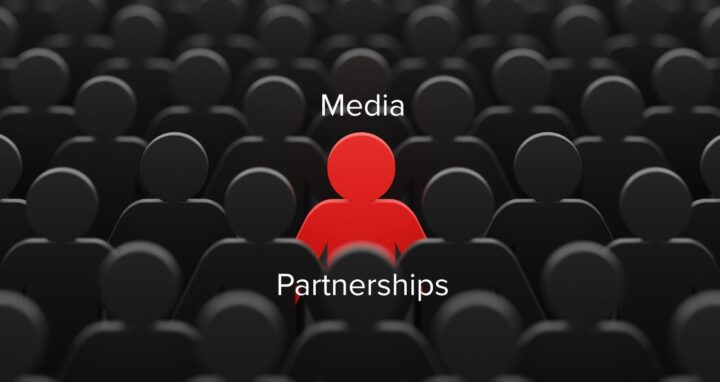Getting more for 2024 with the help of our Worldcom experts
In the second of our three-post series, we’ve included the next four contributions from our Worldcom communications experts from around the world, that address ESG, crisis management, fintech, AI, brand purpose, employee engagement, talent retention, the importance of data to drive outcomes, food and health, travel and tourism, immersive events, crisis communications and the effective use of imagery. You can read Part 1 of Emerging 2023 Trends in the Shifting Communications Landscape.
DOWNLOAD THE FULL GUIDE: EMERGING TRENDS IN THE EVER-SHIFTING COMMUNICATIONS LANDSCAPE
We hope you find them useful in shaping your plans and strategies so that you achieve more in 2024.
Don’t panic, illustrate! – Andras Nagy
We have seen this trend for a long time, but recently it has intensified. The harsh reality that consumers no longer want to read long texts is one that marketers – and PR professionals in particular – must face. Printed newspapers and magazines have fallen into a deep, pitch-black hole. Social media users are no longer talking about books or other print products. It seems that the familiar text-based world of media and public relations is gone forever.
This situation may be uncomfortable, but smart marketers can use it to their advantage. Visualization and illustration are the key words. If you want to be successful with your PR campaigns, you need to invest time, energy and all the necessary resources to properly use creative design to illustrate your messages. As we live in this new, highly visual age, everything has to be visually appealing. High quality illustrations and infographics must accompany press releases. Landing pages, websites and all other digital communications should have visuals that support the brand’s key messages as strongly as written copy. Short-form video, gifs, memes – these also need to be incorporated into communications today, even in corporate and B2B campaigns.
Fortunately, there are plenty of tools and ways to create eye-catching illustrations. Easy-to-use design and video editing software, stock photo and video libraries, even AI-based graphic design solutions. The key element is to know what you want to convey. You need to have an idea of how to support your message with visual content. And this is where design professionals can help. They may not be the cheapest solution, but in most cases the investment in expert skills will yield a better ROI.
In this new visual world, PR and graphic design should go hand in hand. So don’t panic, illustrate.
Interested in learning more? Connect with us at [email protected]
Andras Nagy – Managing Director, Probako, Hungary
From Intuition to Insight: Leveraging Data to Refine Your Craft and Deliver Proven Results – Sierra L’Altrelli
In the swiftly evolving realm of public relations, embracing data and analytics is now pivotal for success. The shift towards data-driven PR is underway, demanding professionals to seamlessly combine intuition with insights. Here’s how to excel in this landscape:
Embrace the Data Shift
With analytics a priority for over 38% of communicators, a fully integrated measurement culture is essential. Don’t rely solely on vanity metrics; embrace data-driven recommendations to prove value and optimize campaigns.
Transform Mindsets
Earned media analytics goes beyond recap reports. Utilize data to make real-time decisions, streamline media relations, and devise long-term strategies. All team members should grasp basic analytics, fostering collaboration between creativity and analysis.
Start Small, Think Big
Begin by leveraging earned media monitoring tools to understand performance. Gradually integrate analytics into day-to-day work, identifying trends and insights to inform effective media strategies.
Prioritize Value Over Volume
Choose metrics aligned with goals. Focus on quality over quantity. Metrics like key media penetration and message pull-through yield meaningful insights, helping to tailor strategies for better results.
In a landscape of shifting currents, navigating the dynamic media landscape requires relationships and data fluency. Foster connections with traditional journalists, podcasters, and influencers to elevate your craft. Embrace analytics to refine strategies, bridging the gap between intuition and insight.
Interested in learning more? Connect with us at [email protected]
Sierra L’Altrelli is Senior Account Supervisor, Analytics & Measurement Strategist, at Coyne PR, New Jersey, USA
ESG Strategy: Moving from “Feel Good” to Real Accountability – Melissa Lackey
Today, no organization, regardless of the industry in which it operates, can avoid the topic of environmental social governance (ESG). Stakeholder expectations are becoming more stringent and “feel good” pieces about charitable donations, volunteer work and local initiatives are no longer enough. Organizations need an ESG strategy that is grounded in data-driven, internationally-recognized reporting frameworks and focuses on disclosure around risks, opportunities and goals. Leaders who are serious about ESG reporting need to take transparency to a new level.
Goal setting and accountability
B2B companies, especially, face a high degree of scrutiny from regulators, investors, employees and customers when it comes to their sustainability performance. Reports that cherry-pick accomplishments can trigger accusations of greenwashing and result in reputational damage. We are witnessing a shift to greater accountability, which means that organizations must set clear goals and integrate ESG metrics into their operations. By being transparent about their goals and sharing them with investors, they’re putting a stake in the ground—and it forces the organization to make progress.
Responding to external influences
Societal trends can influence the areas on which companies report. For example, carbon footprint reduction is now a goal not just for manufacturing companies but also for companies in other sectors. The same goes for supply chain transparency. There’s a lot of diligence that goes into mitigating ESG risks that come from the supply chain. At the same time, the increased focus on DEI has prompted greater attention to company policies and leadership makeup.
Finding your unique angle
While reporting frameworks exist to bring consistency in how companies measure their ESG performance, it’s critical that companies understand and respond to the unique concerns of their stakeholders. When we work with companies on ESG reporting, we recommend asking stakeholders what they care about—what’s material to them, with respect to the industry and/or the company. That’s how they start to begin to build their ESG strategy and figure out what they need to monitor and report on.
Interested in learning more? Connect with us at [email protected]
Melissa Lackey, President and CEO, Standing Partnership, St Louis, USA
Crisis communication is increasingly being left to experts – Serge Beckers
Social media platforms are accelerating the way a problem can become a major crisis within hours and how a local crisis can become a global problem with lasting damage. As a result, more and more companies are seeing the added value of experts who specialize in crisis communications because the dynamics of a crisis and the risk of reputational and commercial damage cannot be underestimated. Regardless of whether you work in healthcare, industry, logistics, pharma or IT: ’15 minutes of fame’ increasingly lead to ’15 years of shame’ unless you are properly prepared for a crisis and have an expert response to a crisis.
Crisis communications experts help you to:
- Ensure you have the crisis systems, policies and processes in place to protect organizations and brands from the worst outcomes of a crisis
- Rehearse and simulate the most likely crises for your organization so that your people are ready to respond in the right. Until you’ve run a simulation you can’t be certain how people will respond – and that lack of certainty can leave you exposed to lasting damage
- Ensure you prioritize people ahead of property or profit in a crisis. If you don’t demonstrate you have a heart the court of public opinion will judge you harshly
- Ensure that every possible audience and channel of communication is monitored, and consistent messages provided. In the absence of transparent messaging people or special interest groups will use your crisis to further their own agenda and leave you damaged in the process
- Learn from a crisis and enhance their preparedness for future crises.
- Identify opportunities to turn the negative story into a positive one by partnering with not-for-profit organisations that enable you to be seen as a genuine force for good.
Interested in learning more? Connect with us at [email protected]
Serge Beckers is Managing Director at Wisse Kommunikatie, Netherlands.
See Emerging 2024 Trends in The Ever-Shifting Communications Landscape – Part 1 post.
If you would like to discuss your plans with a Worldcom expert in your country, please contact us here.
Do you want to know what is coming in 2025?
In 2024, most of our partners around the world had specific advice about the emergence of Artificial Intelligence (AI) in Public Relations. From creating company policies around ChatGPT use to how AI would improve marketing performance, the change has been more rapid that most businesses and practitioners could have predicted.
For 2025, the influence of AI can be seen in every discipline from social media to crisis management to media management.






